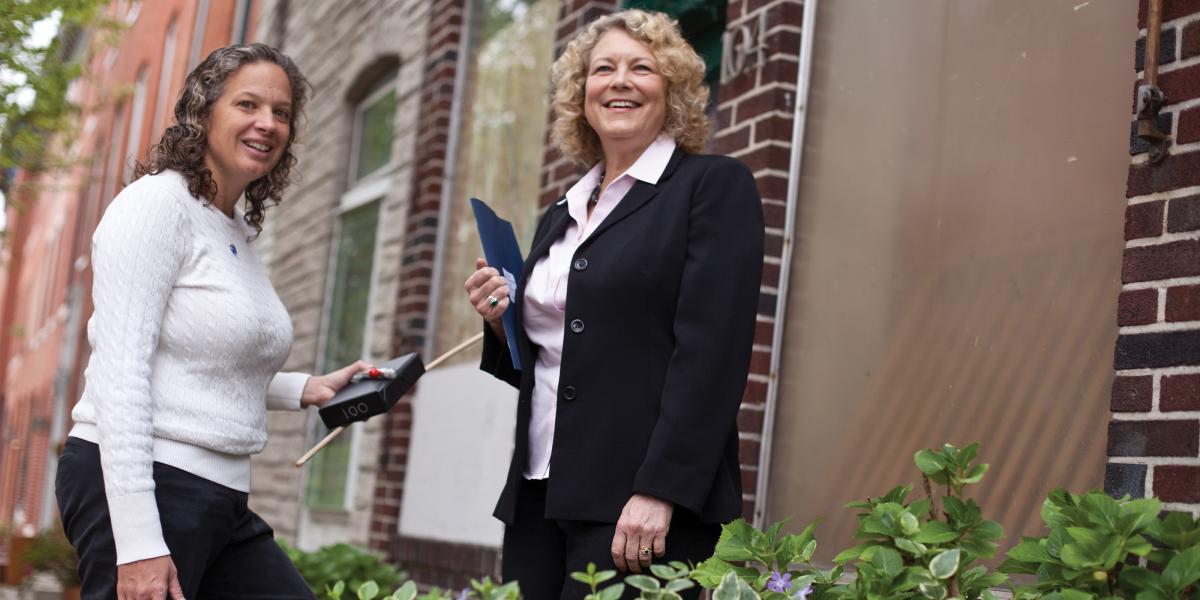Home, Safe Home
For children, there’s no place like home. However, youngsters are injured more often in the home than anywhere else; home injuries lead to more than 4 million emergency room visits by children each year.
For the past 15 years, researchers at the Johns Hopkins Center for Injury Research and Policy (CIRP) have been seeking ways to make homes safe for kids. Recently, they visited more than 200 homes in East Baltimore to determine how well kids are protected and identify hazards like stairs without gates, nonworking smoke detectors or water-heater temperature settings that could cause scald burns. During their investigations, they also learned about unsafe housing conditions. “Our data collectors started telling us about broken stairs, broken windows, holes in the walls,” remembers Wendy Shields, MPH ’96. “This suggested to us that the condition of the house itself is often an overlooked injury hazard.”
The comments encouraged the team, led by CIRP director Andrea Gielen, ScD ’89, ScM ’79, to consider whether standards for low-income housing could be used to protect children. They reviewed the U.S. Department of Housing and Urban Development (HUD) Housing Quality Standards, a checklist used to certify homes for the Section 8 housing voucher program.
“The condition of the house itself is often an overlooked injury hazard.” —Wendy Shields
The researchers, with CDC funding, have now launched an effort to determine if children in Section 8–compliant homes have lower injury risks than those in homes that do not meet the criteria. They also want to know if additional criteria would reduce the risks even further. To that end, they have been developing the Children’s Housing Assessment for a Safer Environment (CHASE) checklist that can be combined with the HUD criteria to more fully capture child injury risks associated with the home. While HUD criteria emphasize built environment hazards like broken floors and bad wiring, CHASE adds hazards such as unsafe water temperatures, poison storage and infant sleep environments.
The idea of “breaking down silos” between the healthy housing and injury prevention communities intrigues Gielen. “These two groups should really be talking with each other,” she says.
One way to encourage interaction might be the new use of a standardized tool to help determine the houses that have a risk of injury for kids. “If [CHASE] performs well, then we’ll be ready to suggest to the folks at HUD that they use this to help ensure that federally subsidized housing is as safe as it can be for families with young children,” Gielen says.
Awareness of health and safety issues in homes has evolved rapidly in recent years. Successful campaigns to reduce brain-damaging lead compounds in house paint and yard soil, and asthma-causing indoor allergens, have given way to a broader public health push known as the “healthy housing” movement. “The problem is that most of the researchers in the healthy housing field don’t have experience in evaluating injury risks, and there’s not yet a standard, validated tool that they’re using to assess these risks,” says Shields. “They’re waiting eagerly for us to develop it.”
